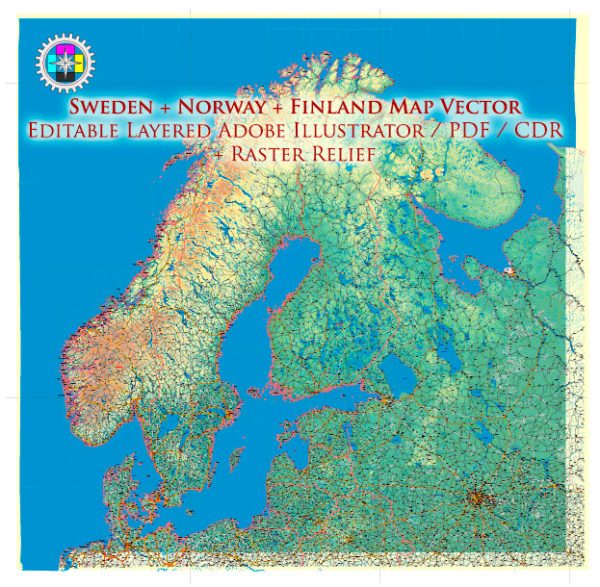The Scandinavian Peninsula, often referred to simply as Scandinavia, is a region in Northern Europe known for its natural beauty, cultural heritage, and distinctive history. It is primarily composed of three countries: Norway, Sweden, and part of Finland. Here are some key characteristics and information about the Scandinavian Peninsula:
- Geography: The Scandinavian Peninsula is located in Northern Europe and is a large, mountainous landmass that extends into the North Atlantic Ocean. It is characterized by rugged terrain, fjords, lakes, and dense forests. The region’s northernmost areas lie within the Arctic Circle.
- Countries:
- Norway: The western part of the peninsula is occupied by Norway. It is known for its stunning fjords, coastal landscapes, and vibrant cities like Oslo and Bergen.
- Sweden: To the east of Norway, Sweden covers the eastern part of the peninsula. Sweden is known for its diverse landscapes, including dense forests, lakes, and the Baltic Sea archipelago. Stockholm is the capital and largest city.
- Languages: The primary languages spoken in the Scandinavian Peninsula are Norwegian and Swedish. In the northern parts of the region, Finnish is also widely spoken, especially in areas of Finland that are part of the peninsula.
- Culture: Scandinavian culture is known for its emphasis on simplicity, minimalism, and functional design. The region is famous for its contributions to design, architecture, and furniture, with the mid-century modern style being particularly influential. Scandinavian countries are also known for their strong social welfare systems, high living standards, and a focus on environmental sustainability.
- History: The history of the Scandinavian Peninsula is rich and complex, with various Viking civilizations that emerged during the Viking Age (roughly 8th to 11th centuries). These Norse seafarers and traders played a significant role in the history of Europe and beyond. Over the centuries, the region saw the formation of the Kingdom of Norway, the Kingdom of Sweden, and the later union of Norway and Denmark, among other historical developments.
- Outdoor Activities: The Scandinavian Peninsula offers numerous outdoor activities, such as hiking, skiing, snowboarding, and ice skating in the winter, and hiking, fishing, and camping in the summer. The Northern Lights (Aurora Borealis) are also a major attraction in the region.
- Sami Culture: In the northernmost parts of the Scandinavian Peninsula, you can find the indigenous Sami people, who have a unique culture, language, and traditions. They traditionally rely on reindeer herding for their livelihood.
- Northern Lights: The Northern Lights, or Aurora Borealis, are a natural phenomenon that can be frequently observed in the northern regions of the Scandinavian Peninsula, especially during the winter months. Tourists from around the world visit the region to witness this spectacular light show.
- Wildlife: The Scandinavian Peninsula is home to a diverse range of wildlife, including moose, reindeer, brown bears, lynx, and a variety of bird species. It offers ample opportunities for wildlife enthusiasts and photographers.
- Northernmost Point: The northernmost point of the Scandinavian Peninsula is the North Cape (Nordkapp) in Norway, which is a popular destination for tourists seeking to experience the midnight sun during the summer months.
The Scandinavian Peninsula is a captivating region known for its natural beauty, cultural heritage, and unique blend of modernity and tradition. Whether you’re interested in exploring its pristine wilderness or its vibrant cities, the peninsula offers a wide range of experiences for travelers and enthusiasts.


 Author: Kirill Shrayber, Ph.D.
Author: Kirill Shrayber, Ph.D.